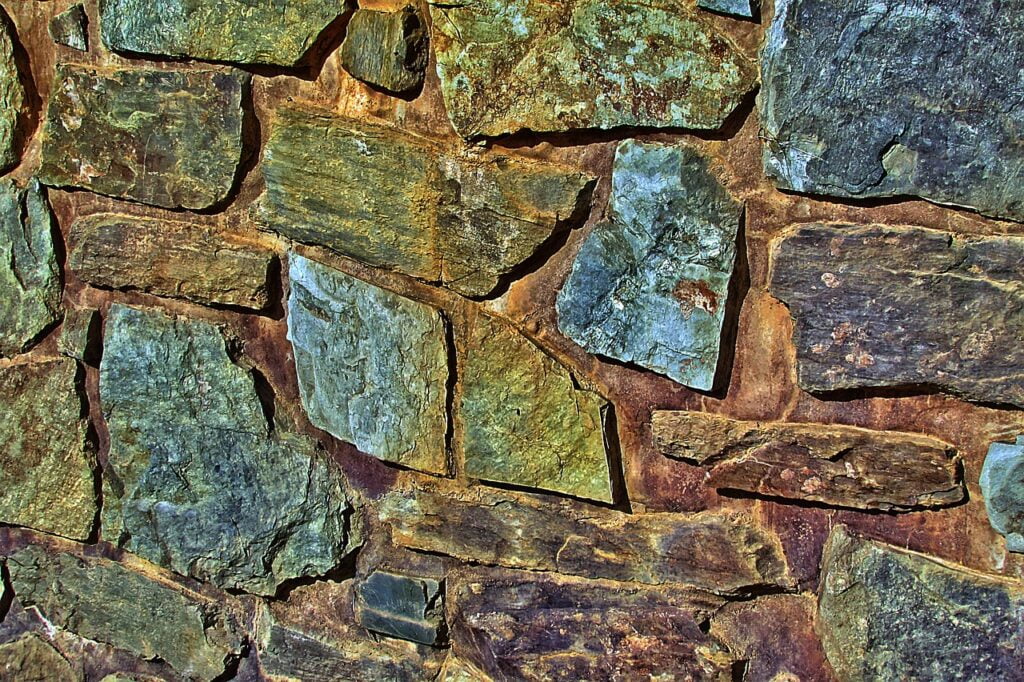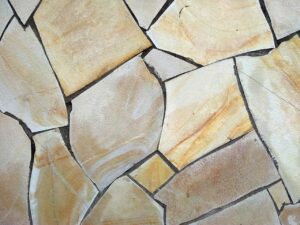Cheapest Flooring Stone in India
India is home to a vast repository of natural stones, making it a major player in the global stone industry. While there are luxurious stones like marble and granite, there’s also an array of cost-effective options available for homeowners on a tight budget. The affordability of certain stones doesn’t compromise their aesthetic or functional value. In this article, we’ll explore some of the most economical flooring stone options available in India.
1. Kota Stone:
Originating from the Kota region in Rajasthan, this limestone variant is popular due to its affordability, durability, and non-slippery nature. Often found in greenish-blue and brown shades, Kota stone is widely used in public buildings, homes, and offices.
Advantages:
- Non-porous and tough, resistant to wear and tear.
- Perfect for both interior and exterior use.
- Requires minimal maintenance once polished.
2. Shahabad Stone:
A type of limestone, Shahabad stone is primarily found in the Gulbarga district of Karnataka. It’s recognized by its light grey, bluish-grey, yellowish or greenish colors.
Advantages:
- Offers uniformity in color and texture.
- Smooth surface, suitable for interiors.
- Sturdy and long-lasting.
3. Tandur Stone:
Sourced from Tandur town in Telangana, this limestone variant is available in blue and green shades. Known for its durability, Tandur stone is often used for exterior flooring due to its resistance to harsh weather conditions.
Advantages:
- Resistant to heat, making it ideal for sunny regions.
- Provides a rustic and natural look.
- Slip-resistant, suitable for outdoor use.
4. Jaisalmer Yellow:
While it’s a type of limestone, Jaisalmer Yellow is often termed as ‘Golden Stone’ due to its shining and brilliant yellow color. Originating from Jaisalmer in Rajasthan, it is less expensive than its marble counterparts but still provides a rich and royal appearance.
Advantages:
- Perfect for creating a luxurious feel on a budget.
- Has a beautiful texture and color.
- Suitable for both walls and floors.
5. Points to Consider:
While these stones are more affordable, homeowners should be aware of certain aspects:
- Maintenance: Though these stones require minimal maintenance, periodic polishing and cleaning can help retain their natural shine.
- Installation Costs: The cost of the stone is one aspect, but installation costs, which can include labor and additional materials, should also be factored in.
- Regional Availability: Depending on the region, certain stones might be cheaper due to transportation costs.
Conclusion:
When it comes to flooring on a budget in India, there’s no shortage of options. The country’s diverse geological terrains offer an array of economical yet beautiful stones suitable for various architectural and design needs. Whether you’re looking for a rustic touch with Tandur or a luxurious feel with Jaisalmer Yellow, India’s treasure trove of stones provides ample options to cater to every budget and taste.
Best natural stone for flooring in india

India, with its vast geographical diversity and rich mineral resources, offers a plethora of natural stone options for flooring. These stones not only exhibit the country’s natural wealth but also provide durable and elegant solutions for interior and exterior floorings. When you choose a natural stone as a flooring option, you are not just opting for aesthetic appeal; you are investing in a piece of the Earth’s history. Here, we explore the best natural stone options for flooring in India:
Marble:
- Popular Varieties: Makrana, Rajnagar, Sirohi, Ambaji.
- Features: Marble is a symbol of luxury and sophistication. It’s smooth, shiny, and can transform any space into a piece of art.
- Use: Ideal for interiors, especially living rooms, bedrooms, and bathrooms.
Granite:
- Popular Varieties: Black Galaxy, Kashmir White, Madurai Gold, Rajasthani Juparana.
- Features: Known for its hardness, durability, and resistance to scratches and stains.
- Use: Suitable for both interior and exterior applications. Common in kitchens due to its resilience.
Sandstone:
- Popular Varieties: Dholpur Beige, Agra Red, Jodhpur Pink, Teakwood.
- Features: Porous, yet durable. Offers a unique matte finish and an earthy look.
- Use: Exterior claddings, garden pathways, and sometimes for interiors with proper sealant.
Slate:
- Popular Varieties: Kund Multi, Indian Autumn, Ocean Green, Golden.
- Features: Slate has a natural, layered appearance, which gives a rustic feel.
- Use: Both interior and exterior, especially for areas with moisture like bathrooms.
Limestone:
- Popular Varieties: Kota Blue, Kota Brown, Lime Black, Tandoor Yellow.
- Features: Non-slippery, smooth, and dense.
- Use: Mainly used for exteriors – pathways, corridors, and driveways.
Quartzite:
- Popular Varieties: Silver Shine, Golden, Copper, Himachal White.
- Features: Extremely durable and resistant to weathering.
- Use: Suitable for both interior and exterior applications.
Factors to Consider:
- Durability: While all these stones are durable, factors like water resistance, scratch resistance, and maintenance should be considered.
- Cost: Prices can vary widely based on the rarity and demand of the stone. Typically, marble and granite are on the higher side, while sandstone and slate are relatively affordable.
- Maintenance: Some stones require regular sealing to prevent stains and retain their beauty. Ensure you’re up for the maintenance routine before deciding.
- Climatic Conditions: Depending on the region’s climate, choose a stone that can withstand local environmental conditions.
Conclusion: India’s rich tapestry of natural stones provides homeowners and designers with a variety of choices for flooring. While each stone has its own unique appeal, it’s essential to understand its properties and maintenance requirements to make an informed decision. By selecting the right natural stone, you not only enhance the aesthetic value of your space but also ensure a lasting legacy of natural beauty and durability.
Natural stone flooring types
Natural stone flooring has long been revered for its unmatched aesthetic appeal, durability, and unique character. Each stone tells a story of its own, shaped by millions of years of geological processes. When used as flooring, these stones provide timeless elegance to any space. In this article, we’ll delve deep into the various types of natural stone flooring available and what makes each one special.
1. Marble:
- Features: Known for its rich veining and vast array of colors, marble has a smooth, polished finish that exudes luxury. Its timeless beauty is seen in many historical structures.
- Maintenance: Requires periodic sealing to prevent staining, especially in lighter shades.
2. Granite:
- Features: One of the hardest natural stones, granite boasts a speckled appearance due to its mineral composition. Available in numerous shades, it’s heat and scratch-resistant.
- Maintenance: Needs occasional sealing to maintain its sheen and prevent stains.
3. Limestone:
- Features: Limestone offers a subtle, earthy palette and often contains fossilized remnants, adding to its unique charm. It’s softer than granite and marble.
- Maintenance: Being porous, it’s essential to seal limestone regularly to prevent staining and erosion.
4. Travertine:
- Features: A type of limestone, travertine has a porous structure with distinctive pitting. Its warm, neutral tones make it a favorite for rustic designs.
- Maintenance: Regular sealing is crucial to fill the pits and maintain its appearance.
5. Slate:
- Features: Slate flooring is known for its rich, dark hues and slightly uneven texture, giving it a rustic, earthy look. It’s highly durable and non-slip.
- Maintenance: To maintain its natural sheen and color, occasional sealing is recommended.
6. Sandstone:
- Features: As the name suggests, sandstone is made from compacted sand. It comes in a range of colors, predominantly warm tones. Its grainy texture offers good grip.
- Maintenance: Regular sealing is needed due to its porous nature.
7. Quartzite:
- Features: Resulting from the metamorphism of sandstone, quartzite is harder and more durable. It has a glossy sheen and comes in various colors.
- Maintenance: Occasional sealing will help in retaining its lustrous finish.
8. Soapstone:
- Features: Typically gray, bluish, or greenish, soapstone is soft to the touch (almost soapy, hence the name) but is reasonably durable. It’s often used for countertops but also makes for a distinctive floor.
- Maintenance: Regular oiling enhances its color, and light sanding can remove scratches.
Considerations Before Choosing:
- Location: Not all stones are suitable for all areas. For instance, non-slip stones like slate are excellent for bathrooms, while marble is preferred in living areas.
- Climate: Some stones may not withstand extreme temperatures or moisture.
- Budget: While natural stone can be more expensive than other flooring options, its longevity and beauty often justify the cost.
- Maintenance Level: Some stones require more upkeep than others, so consider how much maintenance you’re willing to commit to.
Conclusion:
Natural stone flooring is more than just a design choice; it’s an investment in nature’s artwork. Each stone offers a distinct look, feel, and set of properties, ensuring there’s something for every taste and requirement. By understanding the types and their unique features, you can make an informed decision that complements your style and withstands the test of time.
Natural stone flooring indoor
Natural stone flooring has been a timeless choice for interiors across the world. With its authentic touch and unique character, it can transform any indoor space into an elegant sanctuary. Delving into the world of natural stone flooring for indoors, we find a combination of beauty, durability, and versatility that few other materials can offer.
Why Choose Natural Stone for Indoor Flooring?
Aesthetically Pleasing: Every slab of natural stone is unique, offering a distinctive pattern, color, and texture. This ensures that no two stone floors are ever the same, bringing a unique charm to interiors.
Durability: Properly installed and maintained natural stone can last a lifetime, resisting wear and tear effectively.
Eco-friendly: As a natural material, stone doesn’t deplete non-renewable resources or release harmful emissions.
Popular Indoor Natural Stone Flooring Options:
Marble:
- Features: Known for its luxurious appeal, marble has intricate veining and is available in a spectrum of colors. It provides a cool surface, ideal for warmer climates.
- Ideal For: Living rooms, bedrooms, and bathrooms.
Granite:
- Features: Renowned for its strength, granite is scratch-resistant and comes in polished, matte, and flamed finishes.
- Ideal For: Kitchens, hallways, and high-traffic areas.
Limestone:
- Features: Often sporting a textured or honed finish, limestone offers a rustic appeal with its soft, earthy colors.
- Ideal For: Living areas and bathrooms.
Travertine:
- Features: Characterized by natural pits and voids, travertine has a unique, aged appearance.
- Ideal For: Bathrooms, kitchens, and living areas.
Slate:
- Features: Slate tiles offer a natural cleft surface, providing a non-slip feature. Their color range includes grays, blues, and earthy browns.
- Ideal For: Bathrooms, kitchens, and entryways.
Soapstone:
- Features: Soft and smooth, soapstone is non-porous, making it stain-resistant. It usually comes in grayish to green tones.
- Ideal For: Kitchens and bathrooms.
Care and Maintenance:
- Sealing: Many natural stones are porous and need to be sealed to prevent staining. Depending on the stone and the area of installation, re-sealing might be necessary over time.
- Cleaning: Avoid acidic or abrasive cleaners. Warm water, mild detergent, and a soft cloth are often enough.
- Polishing: Stones like marble might require periodic polishing to maintain their shine.
Conclusion:
Choosing natural stone for indoor flooring is about embracing nature’s artwork and inviting timeless beauty into your home. While the initial investment might be higher than some other flooring options, the long-term benefits of aesthetics, durability, and minimal environmental impact make natural stone a valuable choice for any homeowner or designer. Whether you’re seeking the opulence of marble, the ruggedness of slate, or the warmth of travertine, there’s a stone for every indoor setting and style.


